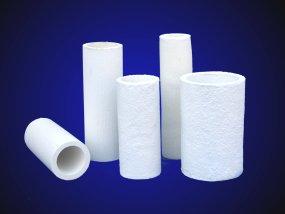




Thomas Tipton wrote:Sid,
I just wanted to get back with you about an idea I had. Unfortunately, the batch box I was looking at is way to big for my space, and I'm getting too old to want to be crouching down on the floor to load the burn chamber. I think I'm going to compromise and go for a J-tunnel since it would be easier to feed, but I still want an 8 inch diameter profile to heat the size of cob bench I'd like and that's what puts the top of the barrel uncomfortably close to my basement ceiling. (wood)
Thomas Tipton wrote:
I have yet to see anyone attempt a single burn chamber/tunnel, dual riser configuration. what do you think?
Could dual risers, either both in one barrel, or one in each of two barrels serve the needs of one larger burn chamber?

Peter van den Berg wrote:Neither of those. Measurements has been done in the vertical stove pipe that comes out of the heater, between 1 yard and 2 yards away from the heater's exhaust opening.
Peter van den Berg wrote:I am sorry, but that won't do the trick. A cyclone after the riser could be done, but it'll cost a lot of energy. Which need to be compensated by a strong draft, either from a very hot chimney or a chimney ventilator.
Peter van den Berg wrote:Sid, could you please start a separate item about your plans and proceeds? As it is now, you are going off-topic in this thread.

Peter van den Berg wrote:
Testing has been done with a Testo 330/2 gas analiser and a computer to log the numbers every ten seconds.
Peter van den Berg wrote:Temperature, oxygen and carbonmonoxide are measured directly and can be compared with other gas analisers.
Peter van den Berg wrote:All the rest is calculated using those three, so is the efficiency. As Jura Rafal mentions, the formula to calculate that are slightly different from country to country depending on what the rules say for that specific country. So difference between mine and say, Matt Walker's analizer's efficiency is about 8%. Regrettably, making efficiency numbers a very unreliable number to go for.





Thomas Tipton wrote:You may well be right about cutting the insulating refractory bricks length wise.
Here's something regarding vortex induction you might be interested in.
https://www.youtube.com/watch?v=iTlOZdpMd6I&list=PLb2E9ll1ekcJcUuJqfkoykF5Q2R3Enuue
